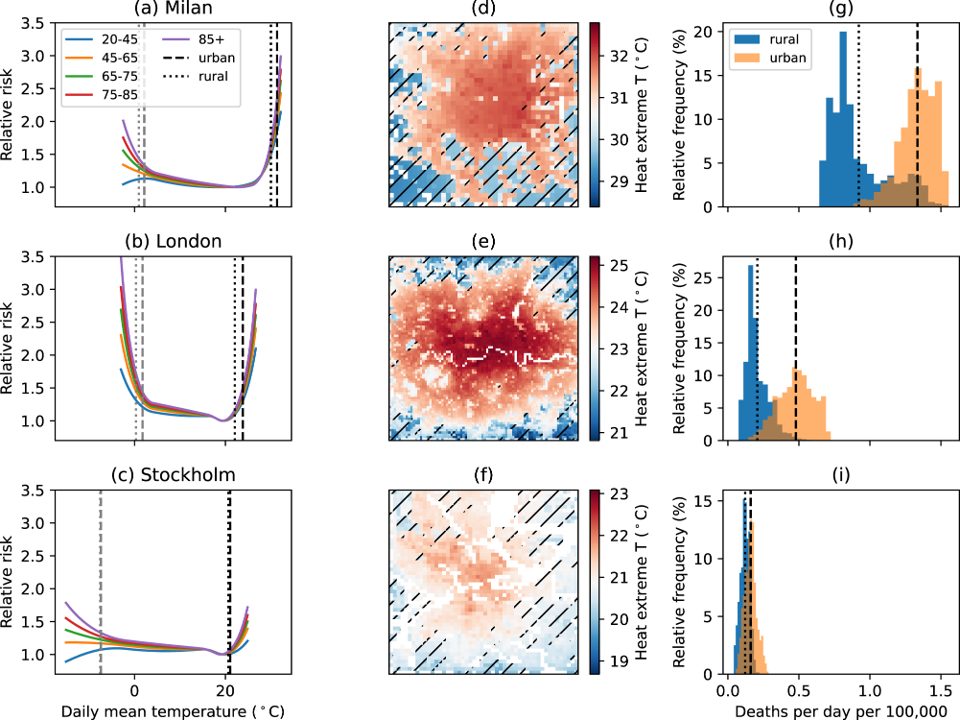Cities modify the energy balance of the land surface and generally exhibit higher air and surface temperatures than the surrounding rural areas – a phenomenon known as the urban heat island (UHI) effect. Cities are also hotspots of energy consumption, anthropogenic emissions, and air pollution with implications for society that range from local to global scales.
Considering that cities are expected to experience the strongest consequences of global climate change and that more than half of the world’s population already lives in urban areas, it is now urgent to identify efficient urban strategies for climate mitigation and adaptation.
At URBES we investigate the variability of UHIs on diurnal, seasonal, and inter-annual timescales, we quantify intra-urban and city-to-city variations in urban climate, and we assess the impacts of urban form and function on heat exposure, mortality risks, and residents’ wellbeing. The overarching goal is to develop tools and guidelines for a climate-sensitive design of our cities.
The impact of urban heat islands on the risks and costs of temperature-related mortality
As the climate warms, heat-related health risks – and the associated social costs – are expected to increase and they can be exacerbated by the urban heat island (UHI) effect. However, UHIs can also offer protection against cold weather as illustrated by Huang et al. (2023).
